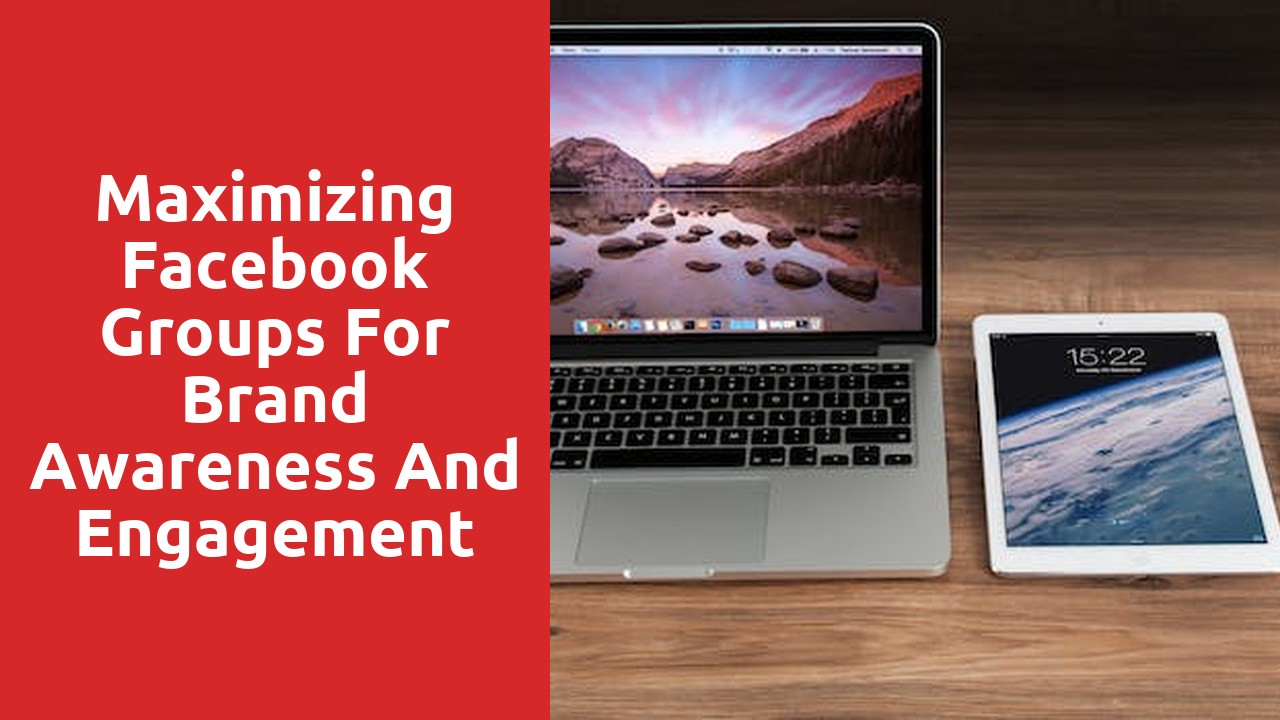Understanding the Power of Facebook Groups for Your Brand
Facebook Groups have become an integral part of brand marketing strategies, offering a unique platform for businesses to engage with their audience on a more personal level. These online communities foster a sense of belonging and connection, allowing brands to establish and nurture relationships with their customers. By creating a Facebook Group for your brand, you can create a dedicated space where enthusiasts, loyal customers, and potential clients can come together to share ideas, ask questions, and provide valuable feedback.
The power of Facebook Groups lies in their ability to facilitate direct communication and interaction between brands and consumers. Unlike traditional marketing channels, Groups allow for a two-way conversation, where brands can actively participate in discussions and gain valuable insights into customer preferences and desires. This valuable feedback can then be used to refine products, tailor marketing campaigns, and provide a more personalized experience for customers. Moreover, Facebook Groups can act as a powerful tool for word-of-mouth marketing, as members are encouraged to share their positive experiences and recommendations with their own networks, helping to increase brand visibility and attract new customers.
Identifying Your Target Audience and Selecting the Right Groups
Identifying your target audience is an essential step in any successful marketing campaign. Without a clear understanding of who your ideal customers are, it becomes challenging to tailor your message and reach out to the right groups. To identify your target audience, start by analyzing your current customer base. Look for common demographics, such as age, gender, location, and income level. Additionally, consider their interests, behaviors, and psychographics. Conducting surveys, interviews, and market research can provide valuable insights into your audience’s preferences and needs.
Once you have identified your target audience, the next step is to select the right groups to reach out to. This involves finding platforms, communities, or organizations where your audience is already active. For example, if your target audience is young professionals, platforms like LinkedIn and professional networking events might be the ideal places to connect with them. On the other hand, if your target audience is teenagers interested in gaming, social media channels like Twitch or Discord could be more effective. By selecting the right groups, you can maximize your chances of reaching your target audience and engaging them with your message.
Crafting an Engaging Group Introduction and Description
When it comes to crafting an engaging group introduction and description, it is crucial to strike the right balance between providing sufficient information and sparking curiosity. The introduction sets the tone for the rest of the group’s experience, so it should be enticing and intriguing. A compelling group description, on the other hand, effectively communicates the purpose and goals of the group, enticing potential members to join. By following a few key strategies, you can ensure your group introduction and description captivate and engage your target audience.
Firstly, start your group introduction with a powerful hook that immediately grabs attention. Whether it’s a thought-provoking question or a bold statement, make sure it relates to the group’s main theme and encourages people to continue reading. Then, provide a concise overview of what the group is about and who it is intended for. This should include the main focus or topic of the group and highlight any unique aspects that differentiate it from similar groups. Finally, end the introduction with a call to action, encouraging readers to join the group and become part of an exciting community of like-minded individuals.
Moving on to the group description, it is essential to clearly articulate the purpose, goals, and benefits of joining the group. Explain how being a member will enrich their lives and provide value. Use persuasive language that evokes enthusiasm and excitement, showcasing the unique opportunities and advantages of being part of the group. Make sure to highlight any exclusive content, events, or resources that members will have access to, as this will further entice potential members to join. Remember, a compelling group description should provide enough information to generate interest and curiosity, leaving readers eagerly clicking the “Join” button.
Establishing Clear Group Guidelines and Moderation Policies
In any online group or community, it is essential to establish clear guidelines and moderation policies from the start. These guidelines serve as the framework for maintaining a positive and respectful environment for all members. Without guidelines, chaos and conflicts may arise, compromising the overall purpose and effectiveness of the group.
The first step in establishing these guidelines is defining the purpose and boundaries of the group. Clearly communicate the objectives, interests, and expectations of the community to help members understand what is acceptable behavior and what is not. This clarity will set the foundation for a productive and engaging group dynamic. Additionally, moderation policies should be implemented to ensure that any inappropriate or disruptive content is swiftly addressed and removed. This will create a safe space for members to freely express their ideas and opinions. By establishing and enforcing these guidelines, both new and existing members will have a clear understanding of the community standards, fostering a positive and inclusive environment.
Creating and Curating Relevant and Valuable Content for Group Members
To effectively engage members in a group, it is crucial to create and curate content that is relevant and valuable to them. By understanding the needs and interests of the group, you can tailor the content to spark their interest and foster meaningful discussions. Start by conducting research and gathering information on the latest trends, industry news, and relevant topics that are of relevance to the group. This will help you stay updated and provide content that is both interesting and informative.
Once you have gathered the necessary information, it is important to curate the content in a way that is easy to consume and understand. Avoid overwhelming group members with lengthy articles or complex terminology. Instead, break the content into smaller, digestible pieces that are concise and straightforward. Utilize visuals such as images, infographics, or videos to complement the text and enhance the overall understanding of the topic. Remember, the goal is to create content that adds value to the group and encourages active participation and engagement.
Encouraging Active Participation and Engagement within the Group
Active participation and engagement within a group is essential for fostering a collaborative and productive environment. When individuals actively contribute and engage in group activities, it leads to increased productivity, creativity, and ultimately, better results. One effective way to encourage active participation is by creating a supportive and inclusive atmosphere. When every member feels valued and respected, they are more likely to voice their ideas and actively contribute to the group’s discussions and decision-making processes. By promoting a culture of inclusivity, where everyone’s contributions are acknowledged and appreciated, group dynamics can be strengthened, leading to higher engagement levels.
Additionally, providing clear goals and expectations can also motivate individuals to actively participate within the group. When everyone understands the purpose and objectives of their collective efforts, they can align their individual contributions accordingly. Clearly defining roles and responsibilities within the group can help individuals understand their own value and how their efforts contribute to the overall success. This sense of purpose and accountability can serve as a driving force for active involvement, as individuals strive to meet the established goals and expectations. By setting clear goals and communicating them effectively, group members are more likely to be engaged and motivated to actively participate in group activities.














